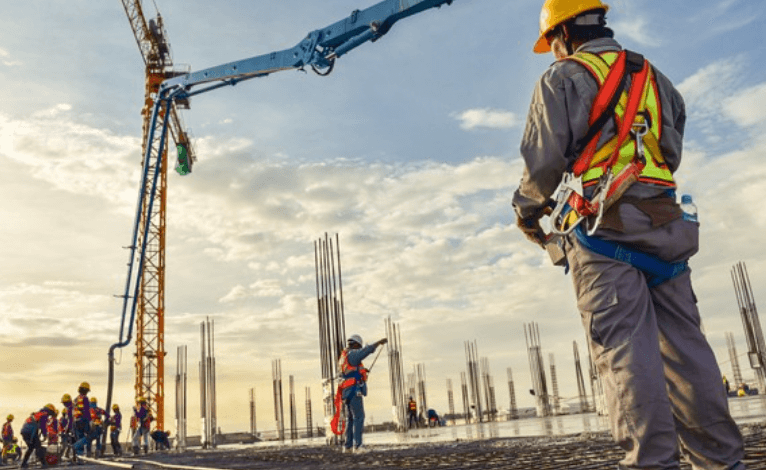Sustainability Standards in Construction: Why They Matter for the Future

As the world faces growing environmental challenges, the construction industry stands at a pivotal crossroads. Traditionally known for its significant resource consumption and waste generation, construction is now evolving to embrace sustainability standards that promote environmental responsibility, social well-being, and economic efficiency. Understanding why sustainability standards in construction matter—and how they shape the future—is essential for industry professionals, policymakers, and communities alike.
The Environmental Impact of Construction
Construction contributes substantially to global carbon emissions, resource depletion, and waste production. According to the United Nations Environment Programme, the building sector is responsible for nearly 40% of global energy-related CO₂ emissions. This includes emissions from producing building materials, construction processes, and building operations over their lifecycle. Additionally, construction activities often lead to habitat destruction, water pollution, and excessive landfill waste.
Given these impacts, the urgency to adopt sustainability standards is clear. These standards provide guidelines and best practices aimed at minimizing environmental footprints and promoting the use of renewable and recycled materials, energy-efficient designs, and waste reduction strategies.
See also: Top Must-Have Industrial Equipment to Boost Your Operations
What Are Sustainability Standards in Construction?
Sustainability standards are frameworks and certification programs that set criteria for green building practices. They ensure buildings are designed, constructed, and operated with environmental, social, and economic considerations in mind. Some of the most recognized sustainability standards include:
- LEED (Leadership in Energy and Environmental Design): A widely used green building certification system that evaluates projects based on energy savings, water efficiency, CO₂ emissions reduction, and indoor environmental quality.
- BREEAM (Building Research Establishment Environmental Assessment Method): Originating in the UK, BREEAM assesses the environmental performance of buildings in areas like energy, water, materials, and ecology.
- WELL Building Standard: Focuses on the health and well-being of building occupants by addressing air, water, nourishment, light, fitness, comfort, and mind.
- Green Globes: A flexible certification program emphasizing energy efficiency, water conservation, and sustainable materials.
These standards encourage holistic thinking, balancing environmental impact with occupant health and economic viability.
Why Sustainability Standards Matter for the Future
1. Mitigating Climate Change
The construction industry’s contribution to greenhouse gas emissions makes it a crucial battleground in the fight against climate change. Sustainability standards push for lower carbon footprints through energy-efficient designs, use of renewable energy, and sustainable material sourcing. By reducing emissions, these standards help slow global warming and reduce the frequency of extreme weather events.
2. Resource Conservation
Non-renewable resources such as timber, minerals, and fossil fuels are extensively used in construction. Sustainability standards advocate for resource conservation by promoting the use of recycled materials, sustainable forestry products, and innovative building methods that reduce material waste. This not only preserves natural resources but also lessens environmental degradation caused by extraction and processing.
3. Healthier Living and Working Spaces
Beyond environmental benefits, sustainability standards emphasize the well-being of building occupants. Good indoor air quality, natural lighting, and access to green spaces contribute to improved physical and mental health. Healthier environments lead to higher productivity, reduced absenteeism, and overall better quality of life for residents and workers.
4. Economic Benefits
Sustainable buildings often have lower operating costs due to reduced energy and water consumption. Although the upfront investment may sometimes be higher, the long-term savings on utilities and maintenance can be significant. Additionally, buildings certified under recognized sustainability standards tend to have higher market values and attract environmentally conscious tenants and buyers.
5. Regulatory Compliance and Incentives
Governments worldwide are increasingly adopting regulations and incentives to encourage sustainable construction. Complying with sustainability standards can help developers meet regulatory requirements, avoid penalties, and qualify for financial incentives such as tax breaks, grants, or expedited permitting.
6. Enhancing Corporate Reputation
For construction firms and developers, demonstrating commitment to sustainability is a powerful branding tool. It reflects corporate social responsibility and can differentiate companies in a competitive market. Clients, investors, and partners are increasingly valuing sustainability credentials, making it a strategic business advantage.
Challenges and the Path Forward
Although sustainability standards offer significant advantages, their widespread adoption faces several challenges. These obstacles include higher upfront costs, gaps in specialized knowledge, and resistance to shifting from traditional construction methods. Additionally, these standards must continuously adapt to keep up with rapid technological advancements and evolving environmental conditions.
Moving forward, overcoming these challenges requires enhanced education and training for construction professionals, strong government incentives, and the adoption of cutting-edge technologies such as Building Information Modeling (BIM), smart sensors, and renewable energy systems. Environmental technology consultants play a vital role in guiding this integration, helping projects implement innovative solutions effectively. Moreover, close collaboration among architects, engineers, contractors, policymakers, and these consultants is crucial to embedding sustainability at every stage of the construction process.
In Conclusion
Sustainability standards in construction are more than just guidelines—they are a necessary framework for building a resilient and responsible future. As climate change pressures intensify and resource scarcity becomes more acute, embracing these standards is critical for reducing environmental harm, promoting healthy communities, and achieving economic sustainability. The construction industry has the power to lead the way by building not only structures but also a sustainable legacy for generations to come.





